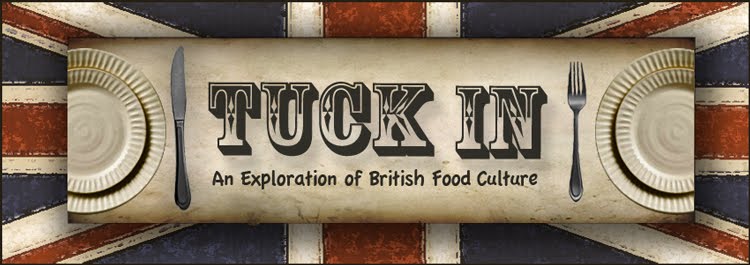I’ve never really been one to love the museums. They’re exciting at first, seeing artifacts and learning new things and whatnot, but I always become bored with them. I can only take viewing numerous clay pots, listening to the tour guide, or walking down cold stark halls for so long. Well, that all changed yesterday when I found a museum exhibit that not only complied with my food interests but also conveniently provided me with an amazing topic for a blog post. It was the Ministry of Food exhibit at the Imperial War Museum and I swear it was made just for me.
You see, World War II played an extraordinarily significant role in the shaping of England’s food culture and almost completely set the general image of English Food. Sadly, that image is a bad one of overcooked vegetables, bland potatoes, canned goods, and the extra parts of animals. But, as this museum shows, this food culture is misunderstood and actually resulted from amazing intentions and innovations during hard war times. It came from people doing the best they can to survive healthfully while supporting their country. The exhibit presented a history that puts meaning to English food and lets us respect it.
During the war, citizens were rationed heavily, limiting the amount of food they could get from a grocer. Also, to save money, England imported much less foreign food items. To boost morale and keep people fed, the Ministry of Food was created. They were a governmental organization that encouraged using the surrounding land and the available resources (the factors that largely determine the food culture for any culture) and a little ingenuity to feed the family. And in England, where the climate is cool and wet, and covered in green pastures, these resources were homegrown vegetables and fruits, a small amount of wheat, and raised animals, hence the “meat and 2 veg” label that is generally applied to English food.
The Ministry of Food worked to increase the amount of farming done and used catchy posters and ads to teach people about economical food consumption, gardening, healthy eating, and preservation. The kitchen and fields were glorified, vegetables were made out to look more appealing than candy, and the Ministry even encouraged the new food regime with the promise that complying would help to save the British economy. “Dig for Victory”, “Use Spades not Ships”, and, my favorite, “Save Bread and you Save Lives, Serve Potatoes and you Serve the Country” were encouraging slogans. Cookbooks with recipes using mostly grown and raised food (like rabbit pie and beetroot brownies) were made to help the women add variety to the table.
Although intentions for the use of food were great, it was the goal of making food serve as many purposes as possible that led to the bad image of English food. Wild game was reintroduced to the diet, animal hearts, kidneys, and other innards weren’t put to waste, food was canned, jellied, and pickled, and preserved like crazy, and leftover vegetables, recooked until mushy and bland, were always consumed. But, this museum exhibit tries to glorify and explain British food and the attention that the people were paying to staying healthy and eating all natural goods and spending more time in the kitchen, bonding with the family. And, the Ministry of Food program probably accounts for the freshness and locality of the meat and produce I’ve seen here.
Hopefully, with the better cooking methods and gastronomic knowledge we have today, chefs can take this British food, and present it in mouthwatering ways that people can appreciate. Hopefully we can embrace the economic lessons and love for the kitchen brought about by this period in time. And most importantly, I hope that knowledge like this can help people to want to carry on the values of the Ministry of Food, instead of succumbing to the growing fast food nation.
I’m sorry for the perhaps dull history lesson, (this will most likely be the only post like this) but I think its essential that both you and I know some history before I go out into the world of English food, whether I’m cooking it or letting someone else do it for me. The war and this time period did not inspire all of English food, of course. There are dishes from before and after, with their own histories, that are just as significant and I am just as excited about trying those as well. But now, when I have a delicious English dish, I can appreciate it even more, knowing how it came about and why it is considered to be quintessentially English. I’ve sufficiently fed my brain, now it’s time for my stomach.
Oh and as a last note, the museum also had a café of wartime food and I happily indulged in a sausage and onion jacket potato (baked potato in America) and green leaf salad. It was so wonderfully creamy and tender, I pondered, how could people NOT love this?












No comments:
Post a Comment